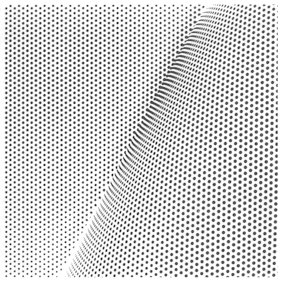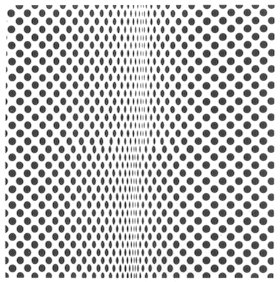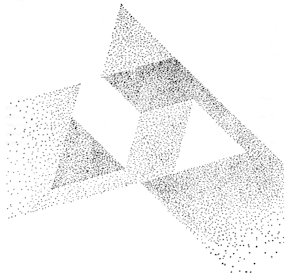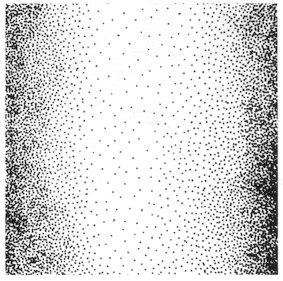|
The modeling effect was created with the density change of lines on the previous page. A similar effect is observed when points are used. The cubic effect was more enhanced by drawing points with a different density than by just drawing the outline of the shape by lines as shown in Figure 390. This has made the shape more attractive. A piece of cloth of a spotted design looks gently
rounded in the picture by B. Riley shown in Figure 391. The cubic effect
of this work was expressed by the change of the number of the points which
are elements of this work as well as the deformation of the shape of points.
In other words, the number of the points per unit area, that is, the density,
varies in place.
|



